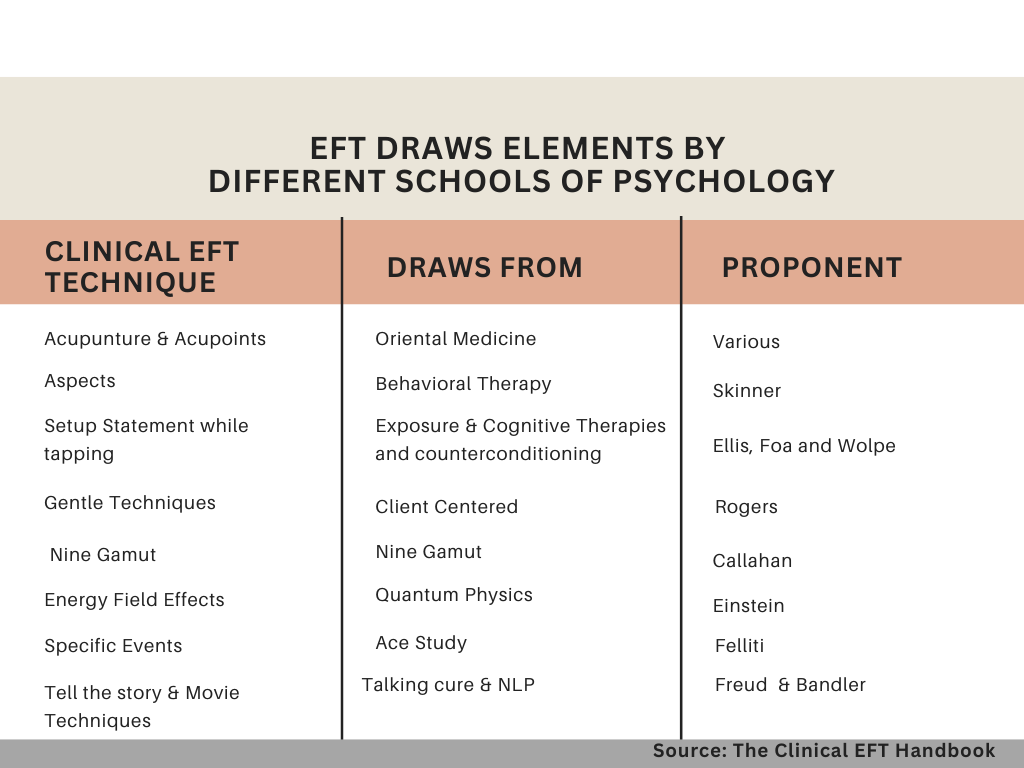Discover the Power of EFT Tapping- A Simple Technique to Overcome Stress and Anxiety
Tired of feeling stressed, anxious, or overwhelmed?
Millions of people struggle with negative emotions that hold them back from living their best lives. It often feels like there's no way out of the cycle of stress and anxiety, but what if there were a simple, natural technique you could use to manage these emotions and improve your well-being?
Enter Clinical EFT (Emotional Freedom Techniques), also known as tapping—an evidence-based method used in all major research studies. EFT is a psycho-physiological stress reduction technique that helps release emotional distress by gently tapping on specific acupressure points on the face and body. By doing this, you send calming signals to the amygdala in the brain, effectively breaking the stress response in the nervous system. It’s like having an "off" switch for stress.
The Science Behind Tapping
Clinical EFT combines cognitive and somatic techniques to calm both mind and body. It draws from modern psychology while also incorporating tapping on points that have been shown to have four times lower electrical resistance than the surrounding skin—making them particularly responsive.
Interestingly, researchers are also exploring a potential link between these tapping points and the newly discovered primo vascular system, a microscopic network in the body that aligns closely with the traditional meridian system in Chinese Medicine.
But most importantly, EFT is evidence-based. Six meta-analyses and over 200 clinical studies support its effectiveness. In dismantling studies and meta-analyses, the acupressure component was shown to be an active ingredient, not just a placebo or general therapeutic effect.
Here’s what the research reveals:
Clinical EFT Improves Multiple Psychological Health Markers
These numbers paint a clear picture—EFT isn’t just about feeling better emotionally; it has tangible, measurable effects on our overall health.
In addition, five fMRI studies show measurable neural changes in the brain after EFT, and over ten studies comparing EFT to gold-standard therapies show it to be equivalent or superior—often producing results in significantly less time. EFT has been studied in universities and clinics around the world, including the U.S., U.K., Australia, South Korea, Canada, Iran, and more. It has also been recognized by government health organizations in countries like Australia, the U.S., the U.K., Slovenia, and South Korea.
The Psychological Aspect
The psychological aspects of tapping draw from elements of various schools of psychology. Tapping supports the nervous system by creating a safe space and sending a signal that there is no threat. When we combine tapping with words that acknowledge the truth of our problems, we disrupt the stress response, allowing healing and relaxation.
Evidence of Effectiveness
Over 200 clinical trials have shown that EFT is effective for:
Stress and Anxiety: Reducing cortisol levels and promoting a sense of calm.
Depression: Improving mood and decreasing symptoms.
PTSD: Alleviating trauma-related symptoms.
Insomnia: Enhancing sleep quality and duration.
Trauma: Releasing emotional pain associated with traumatic events.
Chronic Pain: Reducing the intensity and frequency of pain.
Limiting Beliefs and Blocks: Helping overcome mental barriers.
Cravings and Addictions: Decreasing urges and supporting recovery.
How Does Tapping Work?
If you’re new to EFT, here’s a simple step-by-step guide to get started:
1. Identify the Issue
Pick a specific issue you want to work on and describe how it makes you feel. Be as specific as possible:
"The argument with my boss this morning," or "The embarrassing moment while presenting."
2. Rate the Intensity
On a scale from 0 to 10, rate the emotional intensity of the issue (10 being the most intense). This helps track your progress.
3. Create a Setup Statement
Craft a statement that acknowledges your emotions while offering self-acceptance. Repeat it three times while tapping on the side of your hand. Examples:
"Even though I had an argument with my boss this morning and I feel upset, I accept this is how I’m feeling."
"Even though I made a mistake while presenting and it was embarrassing, I recognize I was doing my best."
This is a personal process—there's no perfect way to do it. The key is to be honest with yourself.
Even though I had an argument with my boss this morning and I feel very upset, I accept this is how I'm feeling right now
Even though I made a stupid mistake while while presenting and it was very embarrassing, I recognize I was nervous and I was doing my best.
Even though they made me feel uncomfortable by their comment, I acknowledge my feelings and I’m open to letting it go.
This is a very personal process and there is no perfect way to do it. Be honest with yourself and express yourself the way you feel. Give yourself permission.
4. Choose a Reminder Phrase
This is a short phrase to repeat while tapping through the points. For example: "The argument with my boss" or "That embarrassing moment."
5. Tap Through the Points
Gently tap through the EFT points while focusing on your emotions. Notice any shifts in your thoughts or feelings.
6. Seek Support When Needed
While EFT can be practiced independently, deeper emotional wounds may require guidance from a trained Clinical EFT practitioner. Be kind to yourself and seek support when needed.
EFT: A Path to Emotional Freedom
Tapping is more than just a stress-relief technique; it’s a science-backed method for self-discovery and transformation. By incorporating EFT into your daily routine, you can release emotional blocks, overcome challenges, and reclaim your peace of mind.
So, the next time stress or anxiety creeps in, remember—your fingertips hold the power to shift your emotions and restore balance.
Cheers to your wellbeing!
Elisa
Do you want to schedule a conversation with me? Check my calendar here





